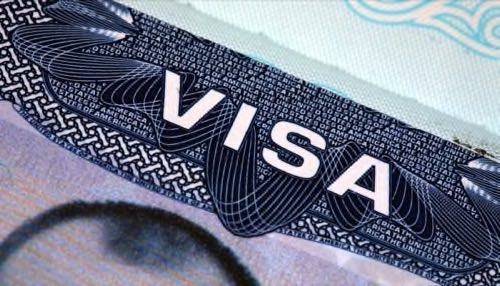
Guest author Michael J. Petrucelli is the founder and executive chairman of iClearpath, an online immigration startup.
Despite the United States’ rich history as a haven for ambitious immigrants, many foreigners looking to work in the U.S. have had to cope with increasingly restrictive immigration policies. As a result, the percentage of immigrant-founded startups in Silicon Valley has declined from 52.4% in 2005 to 43.9% in 2012.
In 2011, leaders in the tech and startup world lobbied for a “Startup Visa” that would allow immigrant entrepreneurs to receive a two-year visa if a qualified U.S. investor was willing to invest in their startup venture. Unfortunately, the proposed bill fell upon deaf ears.
This month, though, the Partnership for a New American Economy announced plans to organize the largest ever virtual march on Washington in support of immigration reform to keep more innovators in the U.S. The goal is to build on what Silicon Valley did in stopping SOPA/PIPA and create the infrastructure for tech leaders to leverage technology and social media to move legislation in D.C.
Until we see a dramatic modification of U.S. immigration policy, foreign entrepreneurs (and freelancers) will have to jump through a series of outdated bureaucratic hoops in order to work in the U.S. Let’s take a look at how complicated that can be:
The Visa Options Rundown
E-visas, H-1B and L-visas are the most common ways to work in the U.S. as a foreign national.
E-1 Visa. The E-1 Treaty Trader Visa is a special designation geared towards businesspeople from select nations (Canada, Mexico, and most European countries) who undertake a sign()ificant amount of international trade with the U.S. To qualify as a trader, at least 50% of the applicant’s exports/imports must concern the U.S. The higher the volume of trade, the more viable the application will appear. Note that this requires an existing business venture (rather than a start-up), significant constraints on the operations of the business and a potentially arbitrary adjudication before the visa is issued.
E-2 Visa. The E-2 Investor Visa is geared towards citizens of select nations who can prove an “active investment with a substantial amount of capital in a bona fide enterprise in the United States.” Again, the definition of “substantial” causes confusion and anxiety because it is not a hard and fast number or equation. ()One rule of thumb hold that an investment of more than $150,000 will be considered “substantial.”) Similarly, any amount that is a large percentage of total investment may qualify. In addition, the applicant must be in the U.S. solely to develop and direct the investment enterprise.
EB-5 Visa. This is the so-called “Mllionaire Visa”. It allows foreigners to become legal permanent residents in the U.S. through a substantial investment in the American economy. There are two paths: the Basic Program and the Regional Center Pilot Program. Both require a capital investment in a U.S enterprise of $500,000 or $1,000,000, depending on the location of the investment.
H-1B Visa. This visa allows U.S. employers to temporarily hire foreign workers in certain specialty occupations. The regulations define a “specialty occupation” as requiring theoretical and practical application of a body of highly specialized knowledge, bachelor’s degree (or equivalent) and any state licensure (if required). H-1B work-authorization is strictly limited to employment by the sponsoring employer, which puts entrepreneurs at a big disadvantage because they cannot sponsor themselves. This is the crux of the argument for an Entrepreneur Visa like those available in countries like Canada, UK, Australia, Chile and Singapore. (Note that the H1-B is a temporary visa that can last up to six years. H-1B holders who want to continue to work in the U.S. after their temporary H1-B expires, but who have not obtained permanent residency status, must remain outside of the U.S. for a year before reapplying for another H-1B visa.)
L-1 Visa. The L-1 visa is geared towards intra-company transfers. However, managers or specialized knowledge workers who have been employed at a foreign company for one of the past three years may be eligible if their new enterprise is in the same industry as their former foreign company. While some creative entrepreneurs have gone this route, the complexity of establishing different operations in different countries is generally not viable for scrappy start-up founders.
OPT Option. Aliens in the U.S. on a student visa can legally work here for 12 months beyond their visa expiration under the Optional Practical Training Program. For students in STEM fields, this extends to 17 months. Its’ a great start for a new graduate, but not long enough a runway to get something up and running.
Other Visa Options
For the sake of completeness, lesser-known visas include
O-1 Visa. O-1 visas are geared towards people with extraordinary ability in the sciences, education, business or athletics. This can extend to successful serial entrepreneurs from foreign nations – though likely not first-time entrepreneurs.
EB-1 Visa. Along the same lines as the O-1 visa, an EB-1 visa is granted to applicants with an “extraordinary ability, [who] are an outstanding professor or researcher, or are a multinational executive or manager.”
E-3 Visa. This classification applies only to nationals of Australia coming to the United States solely to perform services in a specialty occupation. The specialty occupation requires theoretical and practical application of a body of knowledge in professional fields and at least a bachelor’s degree or equivalent. This is a pretty good option for Australians.
While leading the U.S. Citizenship and Immigration Service (USCIS), I saw first-hand how unnecessarily complex the process of immigration paperwork could be. But until a new, dedicated Startup Visa” is established, these options are the only means available to foreign entrepreneurs.
Lead image courtesy of Shutterstock.










